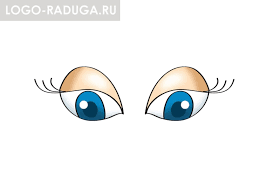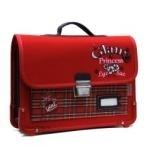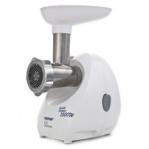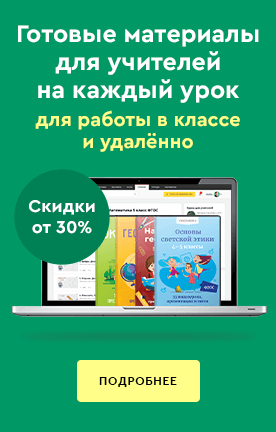Long-term plan
Unit 5: Health and body
School: Rodinskaya Secondary School. Arkalyk
Date:
Teacher name: Anuarbekova A.A.
Class:2
Number present:
absent:
Theme of the lesson: Our body
Learning objectives that this lesson is contributing to
2.R1 read and spell out words for others
2.S3 use a limited range of basic words, phrases and short sentences to describe objects, activities and classroom routines
2.L1 understand a range of short basic supported classroom instructions
2.UE6 use demonstrative pronouns this, these, that, those to make and respond to requests for information
Lesson objectives
All learners will be able to:
- Recognize 10 words of body parts: a head, a hair, an eye, an ear, nose, a mouth, a shoulder, a hand, a leg, a knee.
- pronounce classroom routines intelligibly
Most learners will be able to:
- Name 10 words of body parts: a head, a hair, an eye, an ear, nose, a mouth, a shoulder, a hand, a leg, a knee.
- Demonstrate classroom routines understanding
Some learners will be able to:
- Name 10 words of body parts: a head, a hair, an eye, an ear, nose, a mouth, a shoulder, a hand, a leg, a knee.
- Use all demonstrative pronouns to make requests: this, these, that, those
Assessment criteria
. Learners have met this learning objective if they can:
- recognize, name the new vocabulary correctly: a head, a hair, an eye, an ear, nose, a mouth, a shoulder, a hand, a leg, a knee.
- use demonstrative pronouns to respond requests: this/ that, these, /those
- understand classroom routines
Values links
Learners will work together as a group showing respect and being polite with each other; Health care.
Cross-curricular links
Biology
Previous learning
Letters and sounds.
Plan
Planned timings
Planned activities
Resources
Beginning
0-5 min
Organization moment
– Good morning, pupils!
– Good morning, teacher.
– I’m glad to see you.
– We are glad to see you too.
– How are you?
– We are fine, thank you.
– Sit down.
Warming up
Stand up and look around
Shake your head and turn around
Stamp your feet upon the ground
Clap you hands and then sit down
Slide 1
Middle
6-10 min
11-17 min
18-22 min
23-27 min
28-30 min
31-35 min
36-40 min
Determination the theme of the lesson.
Look at the blackboard, please. You can see some pictures there. Can you guess what we are going to talk about?
(The teacher draws the students' attention to pictures (on the topic "Parts of the body"), hung in advance on the board, and invites them to guess the topic of the lesson.)
Guys, today we will talk about parts of the body. The topic is very interesting, there are a lot of words in it, you need to teach them. what for? (The children answer the question.)
That's right! At first, knowledge of body parts can be useful for describing people. Remember our poem for a physical education about Willy, who cries, because he may have something hurts.
Phonetic drill
T.: Listen to me and repeat after me.
Why do you cry, Willy?
Why do you cry?
Why, Willy? Why? Willy?
Why, Willy? Why?
Introduction to new words on the topic "Parts of the body"
The teacher introduces new words on the topic "Parts of the body." Students will repeat new words for the speaker and read them in pairs
And now, let’s remember parts of the body. Put the words in two column.
(Students are distribute words in two columns: head and body).
Words: a head, a hair, an eye, an ear, nose, a mouth, a shoulder, a hand, a leg, a knee.
Formative assessment. Speaking.
Now, it’s time to speak about parts of the body.
(Students finish the statements orally).
What do we do with?
We smell with our _______, (nose)
We see with our _________, (eyes)
We eat with our ________ (mouth)
Tasty puddings and pies.
With ____ and _____ we walk, (legs) (feet)
With ____and ______ we talk, (lips) (tongue)
And with our ________ (ears)
We can hear.
Game “Draw the man”.
Let’s play game! You must use parts of the body and draw the man.
(Students of the two groups alternately each student gives an assignment to the opponent to draw on the board some part of the body, then a presentation is used for verification).
Student 1: “Draw the hands”.
Student 2: “Draw the (two ) legs”. etc.
Show me your …., please.
(a head, a body, a hand, an arm, a leg, a knee, fingers, toes, a face, an ear, two ears, an eye, two eyes, a nose, a mouth).
Differenciation:
The children memorize the vocabulary and make up sentences using grammar.
For low- motivated pupils: make up sentences using only pictures part of the body with this/that; these/those.
Middle-motivated pupils: make up sentences using cards and some of the demonstrative pronouns this/that; these/those
Hihg-motivated pupils: make up sentences without any support by using all vocabulary and all demonstrative pronouns.
Dynamic break
Are you tired? Let’s have a rest! Stand up, please. Let's sing a song all together. "Head, Shoulders, Knees and Toes"
Formative assessment.
Make up sentences about parts of the body using demonstrative pronouns this/that; these/those
Example: This is a mouth and that is nose.
These are eyes and those are ears.
pictures Slide 2 "Parts of the body
Slides 3-17 http://www.dreamenglish.com/flashcards/bodyparts.pdf
Slides 18
Slides 19
Poster and marker
http://mypersonal-site.ucoz.ru/load/0-0-0-11-20
End
41-45 min
Reflection
Home task: learn the body parts and spelling
T.: Well, children. We have done a lot today! Do you like our lesson today? What do you like? What don't you like?
(Each pupil gets the sticker an write what they like today and what don’t like then put them on the door.)
the bag – you need the information
the mincing machine – you need time to think over the information
rubbish bin – you don’t need the information
Teacher: Thank you.
The lesson is over.
Good bye, children!
Additional information
Differentiation – how do you plan to give more support? How do you plan to challenge the more able learners? Middle 28-30 min.
For low- motivated pupils: make up sentences using only pictures part of the body with this/that; these/those.
Middle-motivated pupils: make up sentences using cards and some of the demonstrative pronouns this/that; these/those
Hihg-motivated pupils: make up sentences without any support by using all vocabulary and all demonstrative pronouns.
Assessment – how are you planning to check learners’ learning?
Monitoring
Checking the task
Middle 36-40 min.
Feedback on the work
Health and safety check
Dynamic break 31-35 min.
Reflection
Were the lesson objectives/learning objectives realistic?
What did the learners learn today?
What was the learning atmosphere like?
Did my planned differentiation work well?
Did I stick to timings? What changes did I make from my plan and why?
Summary evaluation
What two things went really well (consider both teaching and learning)?
1:
2:
What two things would have improved the lesson (consider both teaching and learning)?
1:
2:
What have I learned from this lesson about the class or individuals that will inform my next lesson?





















